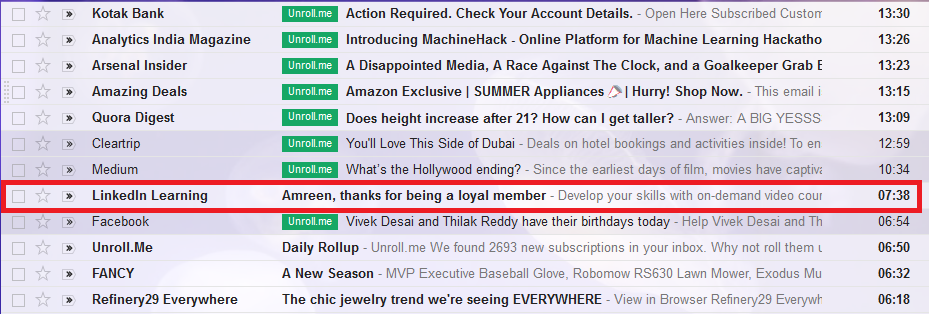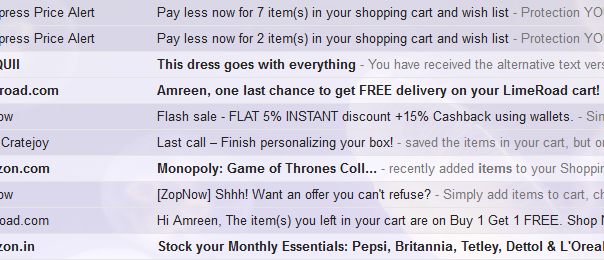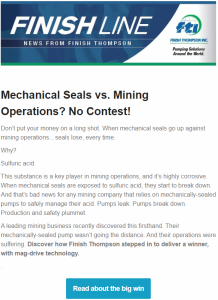— March 28, 2018

A lot goes into crafting the perfect subject line.
The subject line of your email is one of the first impressions someone gets from your brand, especially when you’re sending them an email for the first time. After the ‘From’ name the subject line is the next item that influences whether or not your reader is going to open your email.
Will your customer or potential customer open your email right away?
That’s where personalization in email subject lines comes into play. Are you on a first name basis? Do you know what their interests are? Using what you already know about the customer in your favor should be your No.1 priority while sending marketing emails.
So what makes a subject line interesting?
Personalizing your subject line can be broken down into six broad categories:
- First names: Recognizing your customer and giving them attention (albeit via an email) usually works in your favor. Experian reports that personalized promotional emails have 29% higher unique open rates and 41% more unique click-through rates. Using your reader’s first name in the subject line of your email makes them feel valued. Out of the dozen emails you receive in your inbox daily, the ones that usually catch your eye are the ones that mention your name in the subject line. The same goes for all your readers and customers.

Learn how first names and other personalization tricks can make your email stand out.
This screenshot is from my personal Gmail inbox, and it’s pretty obvious which email stands out amongst the clutter.
- Interests: Sending an email with a subject line that talks about dog supplies to a cat owner or vice versa is one of the biggest email marketing sins. It just goes to show that you don’t know your customers at all and this might get them to unsubscribe from your mailing list. Use your knowledge of your customers to talk with them one-on-one in your emails, taking your personalization to the next level. Your subject lines should let readers know that there’s something in the email they’ll find relevant to them.
- Birthdays/Anniversaries: According to Experian Marketing Service’s “Birthday and Anniversary Report,” whether the subject line is a simple “Happy Birthday” or talks about an offer or discount, the response metrics are strong for such emails. Open, and click-through rates are significantly higher when you take that extra step for your customers. Don’t know your customers’ Birthdays/Anniversaries? Send out a survey. Include a discount or a free trial of your product or service (everyone loves those!).
What’s nice is that you can automate these birthday and anniversary emails knowing you’ll get high engagement with them. You can also celebrate your ‘Brand Birthday’ with your customers. The more, the merrier.
- Transaction history: An offer on an irrelevant product will be useless to someone who’s already purchased product X from you. Tap into your customers’ transaction history – Figure out what they like and buy. Send them an email with the subject line concentrating on related products and services and watch them return to your site. Customers look to see if you are paying attention to their needs and if you’re willing to take that extra step to convert them into a returning paying customer.

Another example from my inbox. You can see which emails I’ve opened – Emails that make me curious, create a sense of urgency, and remind me to check out before my favorite products are sold out.
- Urgency: The fear of missing out or FOMO is something that plagues us all. “Only Four samples remaining” or “New tax implications go live Tomorrow!” – Subject lines that create a sense of urgency and scarcity have a 22% higher open rate. But these need to be used moderately. If you’re sending an email a week saying, ‘Only 4 items left’, people are going to start to wonder why you’re so understocked all the time.
- Location: Sending emails to customers about summer dresses when it’s still snowing in their part of the world is silly, and reeks of bad research on your part. However, an email that reads, “Clearance Sale: 80% off on Winter Coats” might get a customer to open and read your email. Small businesses and nonprofits can use localization to create email subject lines that interest readers based on what’s happening around them.
Some other things to consider in your subject lines.
Avoid using common phrases that trigger spam filters in your subject lines. Using ‘free’ along with words like ‘guarantee and spam’ most often makes sure your email lands in the spam folder. Email subject lines with all caps and excessive punctuation marks also have a higher tendency of landing in spam.
Keep character limits in mind. With an increasing number of emails (56%) now being read on mobile devices, you need to make sure your customers can read the entire subject line. At Constant Contact, we typically recommend four to seven words or 40 characters for subject lines.
Put personalization in subject lines to use to get better open rates.
Remember: A subject line should be a summary of what your email contains, thus the more relevant it is to the reader the more likely your subject line is to help in boosting your email open rates.
Have you used any of the personalization tips above? What’s worked for you?
Join us for a free webinar, How to Create More Personalized Email Messages.
Digital & Social Articles on Business 2 Community
(118)
Report Post



